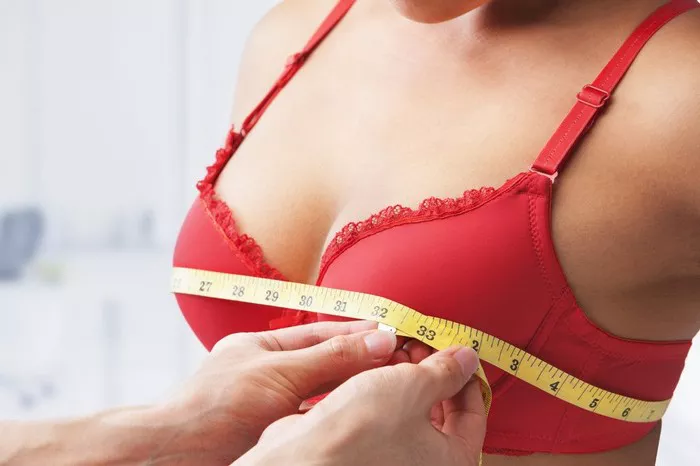Breasts are an important part of a woman’s body, and their size and shape can vary greatly. Some women may experience heavy breasts, which can be uncomfortable and even painful. Heavy breasts can affect a woman’s quality of life, causing physical and emotional discomfort. In this article, we will explore what heavy breasts feel like and what causes them.
Understanding Heavy Breasts:
Heavy breasts are breasts that are larger and heavier than is typical for a woman’s body. Heavy breasts can cause discomfort, pain, and even physical limitations. Women with heavy breasts may experience shoulder, neck, and back pain, as well as skin irritation and difficulty finding clothing that fits properly.
Breast Size and Shape:
Breast size and shape can vary greatly among women. Breasts are made up of glandular tissue, fatty tissue, and connective tissue. The amount of each of these tissues can affect the size and shape of the breasts.
The size and shape of a woman’s breasts can also change throughout her life. Hormonal changes, such as those that occur during puberty, pregnancy, and menopause, can affect breast size and shape. Weight gain and weight loss can also affect breast size and shape.
What Causes Heavy Breasts?
There are several factors that can contribute to heavy breasts. These include:
Genetics: Genetics can play a role in breast size and shape. Women with a family history of large breasts may be more likely to have heavy breasts.
Hormonal changes: Hormonal changes, such as those that occur during puberty, pregnancy, and menopause, can affect breast size and shape.
Weight gain: Weight gain can cause an increase in breast size, which can lead to heavy breasts.
Breastfeeding: Breastfeeding can cause changes in breast size and shape, which can contribute to heavy breasts.
Aging: As women age, their breast tissue can become less dense and more fatty, which can contribute to heavy breasts.
What Do Heavy Breasts Feel Like?
Women with heavy breasts may experience a range of symptoms. These can include:
Discomfort: Heavy breasts can cause discomfort and pain in the shoulders, neck, and back.
Skin irritation: The skin under the breasts can become irritated and even infected due to the weight of the breasts.
Difficulty finding clothing: Women with heavy breasts may have difficulty finding clothing that fits properly, especially bras.
Posture problems: Heavy breasts can cause posture problems, which can lead to back and neck pain.
Breathing difficulties: In severe cases, heavy breasts can cause breathing difficulties.
Breast Reduction Surgery:
Breast reduction surgery is a cosmetic procedure that can reduce the size and weight of the breasts. This procedure can also alleviate discomfort and pain associated with heavy breasts. During the procedure, the surgeon will remove excess breast tissue and skin, and reshape the remaining breast tissue.
Breast reduction surgery is typically performed under general anesthesia and takes several hours to complete. After the procedure, the patient will need to wear a supportive bra and avoid strenuous activity for several weeks. The recovery period can take several weeks to several months, depending on the extent of the surgery.
Breast reduction surgery is a major surgical procedure and carries some risks and potential complications. These can include bleeding, infection, scarring, changes in nipple sensation, and difficulty breastfeeding. It is important for women considering breast reduction surgery to discuss the risks and potential complications with their surgeon.
Supportive Bras:
Wearing a supportive bra can help reduce discomfort and pain associated with heavy breasts. A supportive bra can also help improve posture and reduce skin irritation. It is important to choose a bra that fits properly and provides adequate support.
There are several types of supportive bras available, including sports bras, minimizer bras, and full-coverage bras. Women with heavy breasts may also benefit from bras with wide straps and a wide band.
Physical Therapy:
Physical therapy can help improve posture and reduce pain associated with heavy breasts. A physical therapist can provide exercises to strengthen the muscles in the back, shoulders, and neck, which can help support the weight of the breasts.
Physical therapy can also help improve range of motion and flexibility, which can reduce pain and discomfort. Women with heavy breasts may also benefit from massage therapy, which can help reduce tension and improve circulation.
Medications:
In some cases, medications such as pain relievers and anti-inflammatory drugs may be prescribed to alleviate discomfort and pain associated with heavy breasts. These medications can help reduce inflammation and swelling, which can alleviate pain and discomfort.
Conclusion:
Heavy breasts can be uncomfortable and even painful, and can affect a woman’s quality of life. Women with heavy breasts may experience discomfort, skin irritation, difficulty finding clothing that fits properly, posture problems, and breathing difficulties. There are several treatment options available for women with heavy breasts, including lifestyle changes, supportive bras, breast reduction surgery, physical therapy, and medications. If you are experiencing discomfort or pain associated with heavy breasts, it is important to talk to your healthcare provider about your treatment options.


